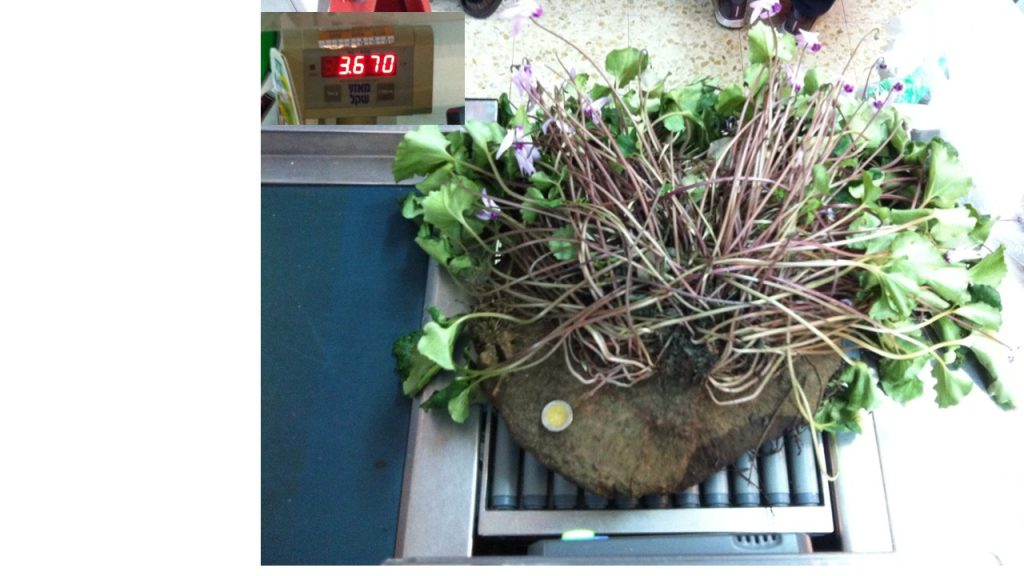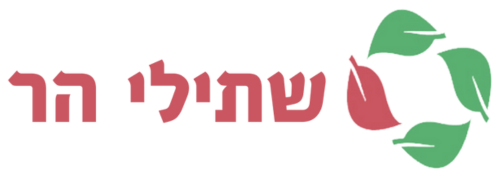
Cyclamen persicum – Wild Cyclamen
Family: Primulaceae | Origin: Eastern-Mediterranean
The cyclamen is one of the most well-known and beloved plants in Israel, and in our opinion, it lost the competition for first place as Israel's national flower to the common Anemone, only because it does not bloom in red.
The respect and love that we all share for this plant is evidenced by the hundreds of girls and women named after it, the village named Rakefet, several famous songs, dozens of streets and hundreds of kindergartens named after the Cyclamen scattered throughout the country.
In almost every region of the country, you can see the beautiful leaves and delicate pinkish fragrant flowers in winter.
Each bulb grows large, heart-shaped leaves, which are dark green in color and have a characteristic silver-gray pattern that is the same on every leaf, but unique to it and different from the leaves of other bulbs.
A single bulb can bloom for about 4-5 months from the beginning of winter until spring and produce dozens of white or pink flowers with a dark stripe around the mouth of the flower (Each bulb carries identical flowers which are also slightly different from the flowers of other bulbs). A single flower usually blooms for about 3 weeks!
The flowers are inclined downwards, probably to protect the stamens from the rain, but the petals curve upwards, thus creating the special flower structure.

At the end of flowering, the cyclamen bears round, burgundy-brown fruits containing hard brown seeds, and when the fruit opens in May-June, the long fruit stalk bends and scatters the seeds in nearby rock crevices.
Ants also help disperse the seeds over greater distances; each seed is covered (when the fruit opens) with a sweet, oily coating called elaiosome (which serves as a food source for the ants).
After being collected into ant nests under rocks, in rock crevices, and even in wall cracks, the hard seeds remain and germinate there, and that is how the cyclamens reach these surprising places.
The young sprout develops a tiny, transparent tuber in its first year that grows a single leaf, and only after 4-5 years does the plant reach flowering size, and later the cyclamen can live for more than a hundred years and, under good conditions, weigh 3-4 kg!

Most cyclamens in Israel grow their leaves after the first autumn rains and bloom a little later, but there are populations in the north of the country where the first flowers bloom before the leaves emerge and sometimes even before the rains.
From our wild cyclamen and several other cyclamen species, hybrid cyclamens were cultivated through repeated hybridization.
These are sold in nurseries as flowering plants that appear in many colors and shapes.
In contrast, wild cyclamens are sold almost only as bulbs, and it is important to note that these are grown from seed at the growers fields and are not collected from the wild.
When you buy a bare bulb in a nursery, it sometimes happens that it grows leaves but does not bloom in the first year after planting, but do not worry – in later years it will flower profusely.
The wild cyclamen grows very easily anywhere that is not watered excessively. It succeeds in shade and sun, under trees with root competition and in containers alone or in combination with other plants in any reaso9nable soil.
One should dry it completely, or at least ensure excellent drainage in the summer to prevent rot during summer dormancy.
When planted in a Mediterranean garden, seeds will be dispersed over the years and new cyclamen plants will appear in unexpected places to add great charm to the garden during winter and early spring.
In our opinion, every self-respecting mountain (and lowland) gardener must grow some wild cyclamen in his garden, even if it is a container garden on the balcony!
Autumn is the best time to plant them – so do not procrastinate!
לכתבה על רקפת מצויה בעברית לחצו כאן

